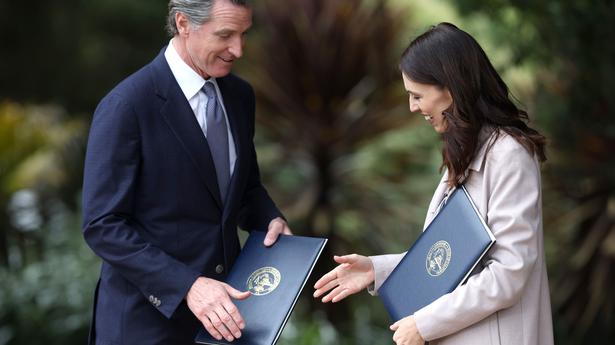While the Central and Tamil Nadu governments have, in recent weeks, initiated measures to tap into offshore wind energy, the State may still have a long way to go in achieving success.
Tamil Nadu Electricity Minister V Senthilbalaji had earlier this week visited offshore wind farms in the United Kingdom along with a delegation of State government officials. He visited offshore wind farms located in Grimsby, North Sea, “with a view to setting up wind farms at sea and increasing power generation in Tamil Nadu”.
In a related development, the Union Ministry of New and Renewable Energy (MNRE) had recently announced that through its implementing agency, it will issue a tender for leasing out offshore wind energy blocks. equivalent to 4.0 GW capacity, off the coast of Tamil Nadu in the next three-four months.
According to information provided by the Ministry in the Lok Sabha, 31-GW offshore wind power potential exists off the coast of Tamil Nadu. Based on the preliminary studies carried out by the National Institute of Wind Energy (NIWE) in collaboration with multilateral agencies, the government has identified eight zones each off the coast of Gujarat and Tamil Nadu as potential offshore wind energy zones, it added.
Tapping into the offshore wind energy potential has been talked about for many years now, but the progress has been slow. Experts pointed out that even though an announcement for tender has been made, there are many bottlenecks to be overcome for Tamil Nadu as well.
Kashish Shah, research analyst, Institute for Energy Economics and Financial Analysis, said offshore wind is a great clean energy source “as it delivers utilisation rates higher than 50% compared with onshore wind with 30%-35% and solar with 20%-22%.” Offshore wind could be a valuable source to replace the end-of-life coal power plants as the country looks to decarbonise its power sector by retiring coal-fired power plants.
Also, depending on the daily generation profile, essentially depending on the time when wind is blowing, it could complement solar generation. This could provide round-the-clock clean power, he added.
However, offshore wind involves higher capital cost and consecquently higher tariff, whereas on-shore wind costs are about one-tenth of it. “So, the big question is who bears this cost? Would the State-owned power distribution companies (Discoms), which are already in a troubled financial position, be willing to buy power from these expensive projects? Eventually these will have to be passed on to the Discom customers, which will result in higher power bills,” Mr. Shah pointed out.
Citing China’s experience, Malolan R Cadambi, MD, Greenshore Energy Pvt. Ltd., says, “we would estimate offshore wind to cost around ₹9.425 per unit, assuming we achieve the same cost efficiencies as those of China.”
An instant large-scale roll-out of offshore wind farms of higher capacities does not seem feasible. Instead, Mr. Cadambi said, it would be better to focus on captive commercial and industrial consumers who have facilities that need energy in coastal areas.
“Desalination plants, for example, are some of the best captive customers that could come by for offshore wind farms. This could help mitigate and provide an alternative revenue stream instead of depending on power distribution companies,” he said.
According to him, if Export Processing Zones (EPZs), Special Economic Zones (SEZs) and ports are in close locations, they will benefit from having offshore wind power as part of their energy mix.
“From a social angle, offshore wind turbines can be fitted with mobile antennas to roll out 5G in the sea for fishermen who can leverage information about potential fish zones,” Mr. Cadambi said. As for the impact of offshore wind on coastal life, he said, “We have adequate Coastal Regulation Zone laws to permit offshore wind facilities with rapid Marine Environment Impact Assessment.”
Mr. Shah pointed out that to begin with offshore wind would require significant support from the government in terms of subsidies, permitting and development of the value-chain for the first few projects. “Once the cost comes down with technological advancements and learning by doing, the industry can survive on its own. In Europe, one of the key drivers of cost deflation in offshore wind was lower financing costs. As the confidence in project delivery improved over the years, new projects started attracting long-term lower cost pension fund money, making debt cheaper for the projects,” he added.




